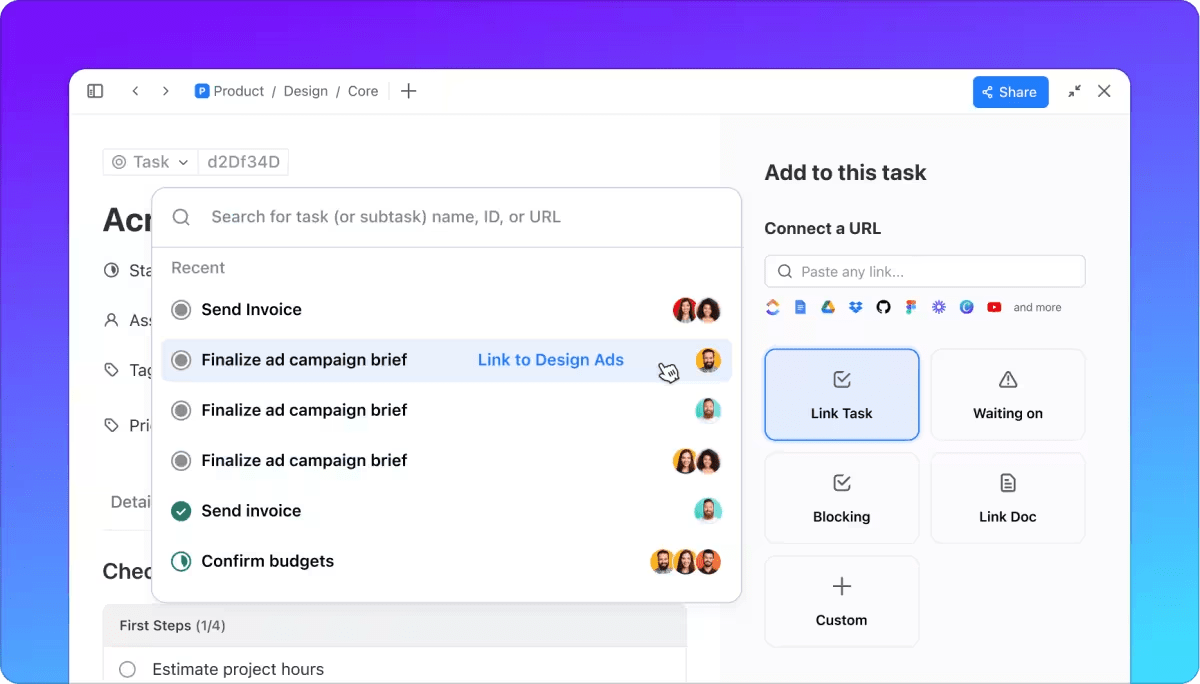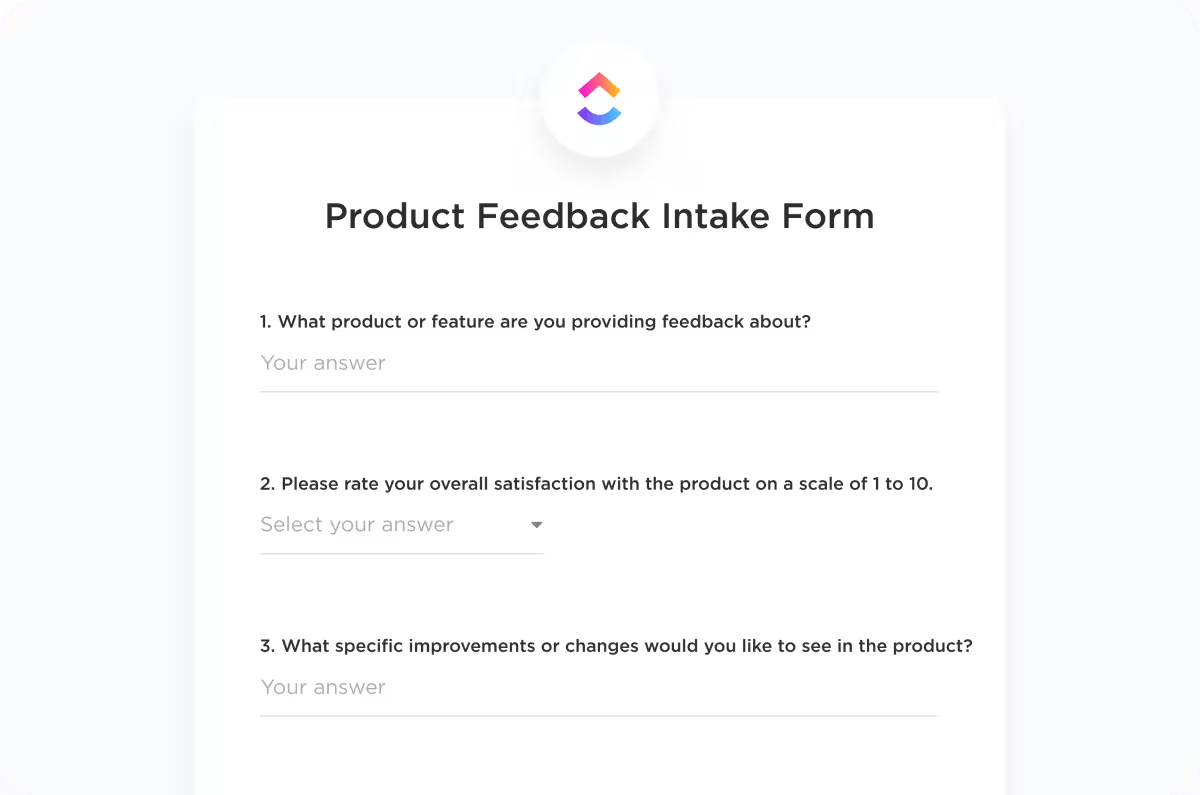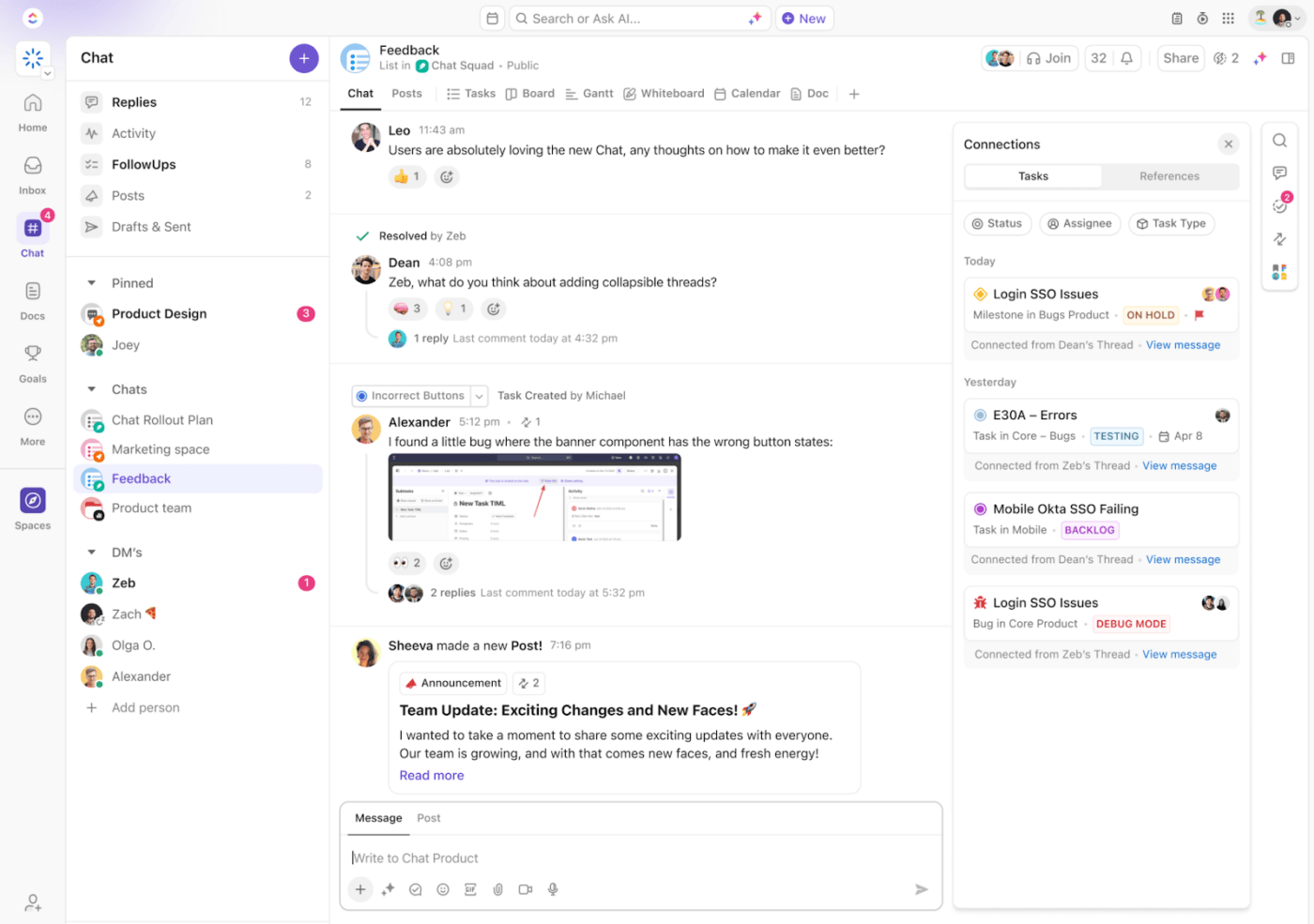How to Implement Product-Led Growth Strategies for SaaS

Sorry, there were no results found for “”
Sorry, there were no results found for “”
Sorry, there were no results found for “”
Let’s admit it: No, the product does not sell itself. Even the best products in the world have significant marketing, sales, and distribution efforts behind them.
But here’s the catch, companies that create great products build their marketing and sales around the product—a business strategy called product-led growth. In the world of Software-as-a-Service (SaaS), product-led growth (PLG) is one of the most popular yet elusive strategies.
So, what’s the secret to product-led growth? To find out, we need to enter the hallowed portals of PLG SaaS. Let’s go. 🚀
Product-led growth is a SaaS marketing strategy that leverages the product as the foundation of go-to-market initiatives. The entire organization, including sales, marketing, customer success, design, and development, aligns to create sticky products that drive growth.
Critical characteristics of a product-led strategy include:
Product-led growth is the result of several historical and emerging changes in the software market.
Purchase decisions: To begin with, the decisions around organizational software today are democratized. Users have a bigger say in what tools organizations buy. Teams—sometimes even individuals—choose their own toolkits to get work done faster and better.
UX trends: The days of ugly, unusable enterprise software have made way for modern, user-centric designs—a hallmark of today’s B2B tech. UX has become a key differentiating factor.
Subscription models: Today, nearly all software is paid for through periodic subscriptions. This removes the financial obstacles to trying our various options before making decisions.
Self-service or no-service mindset: Gartner found that if the needs of GenZ and millennial customers weren’t met in self-service, they would use the product less, never buy from the company again, and say negative things about the product.
In response to these market trends, organizations turned to growth marketing strategies that engaged users, allowed them to buy independently, delivered impressive UX, and encouraged them to upgrade. Thus, PLG was born.
A product-led company is unique in that almost everyone is responsible for growth. Here’s how.
Unified org structure: PLG, as a strategy, unifies the entire organization. It breaks down the silos between product, sales, marketing, etc., to rally the whole company toward growth.
Product-focused communication: When the product is the primary driver of growth, the strategy shifts from traditional sales and marketing to creating a platform that effectively showcases the product.
For example, as part of a launch, a cross-functional team would collaborate to create customer-centric content, such as:
Continuous improvement: PLG teams collaboratively iterate on UX through experimentation. They study user behavior, adoption, abandonment, etc., to devise mitigating strategies.
Redefined marketing and sales: In product-led companies, especially in B2B SaaS enterprise software, marketing’s role centers around product education, user experience, and customer engagement, while sales teams focus on custom solutions and upsell.
Traditional growth strategies delineate sales from the product. In sales-led or customer-led growth, the product team builds the product, and the marketing/sales team takes it to market. Product-led growth changes that and, in doing so, differentiates itself from other SaaS marketing strategies in several ways.
| Parameter | Product-led | Sales-led | Customer-led |
|---|---|---|---|
| Driver | Product | Sales team | Customer feedback and satisfaction |
| Onboarding | Self-serve product guides | Demos and installations led by the sales team | Setup and adoption led by the customer success team |
| Customer acquisition cost | Low because of inbound and self-serve customer journeys | High including the cost of sales | Medium, with higher focus on retention and recurring revenue |
| Scalability | High: Product virality leads to more adoption | Moderate: Adoption limited by sales team capacity | High: Customer satisfaction can lead to organic growth |
| Product development | Iterative and based on data from product usage | Based on sales feedback and customer satisfaction | Based on direct customer feedback |
| Customer relationship | The relationship is with the product, with minimal interaction with customer service (as needed) | The relationship is with the sales reps, often close and collaborative | The relationship is with customer success teams, through continuous engagement |
While these three strategies look distinct from one another, they are not mutually exclusive. Some of the most successful organizations take a hybrid approach, using and combining the best parts of these models, based on their current context.
For instance, a productivity tool might use PLG for individual/small business customers and a sales-led growth approach for enterprises that seek customizations and support.
B2B SaaS businesses often begin as sales-led companies, slowly transitioning to product-led when marketing strategies like SEO, social media, content, etc. gain traction online.
Whether you use PLG on its own or in combination with other methods, keep in mind that your strategy needs a foundation.
Product-led growth relies on the software to attract, engage, and retain customers. The product drives virality, onboarding, engagement, and stickiness. To achieve this, businesses need to build their product on the following three pillars.
The product-led approach is about your users finding the “Aha!” moment. This drives product onboarding, usability, and virality.
To attract and keep your customers, you need to build for their needs and solve their most pressing problems. To get started with this, create a fantastic UX throughout the customer journey.
SaaS tools typically offer pay-as-you-go plans or monthly rolling contracts. This means that the customer can leave at any point with very little cost of doing so. To retain a customer in such scenarios, a product needs to deliver value consistently and regularly.
To get development and growth work in tandem, you need two-way collaboration. Enable that deliberately.
Product-led pillars also promote SaaS growth by widening the top of the sales funnel and encouraging more users to move down by delivering value upfront and making it easy to see results. But that’s not all.
Fact Check: A recent study found that 91% of companies plan to increase investment in product-led growth. 75% of senior leaders at B2B SaaS companies are “concerned about competition from PLG companies,” and with good reason!
For starters, PLG dramatically reduces customer acquisition costs. With free trials, self-serve onboarding, content-driven engagement, automation, and limited sales team interactions, PLG companies reduce personnel costs and overhead. This reduces CAC.
For example, Zoom offers a free version with usage limitations, reducing barriers to trial. The product is intuitive and easy to use. When users are impressed by the experience, they upgrade themselves without a single conversation with a sales representative.
Bain & Company found that companies using a product-led growth strategy made higher revenue than those who didn’t. And that is by design.
In product-led growth, scaling the user base doesn’t depend on the number of salespeople you employ. So, businesses can onboard more users with fewer resources and drive faster growth. In addition, PLG companies create wider reach through viral content, word-of-mouth, customer referrals, upgrades, etc.
A strong product-led growth strategy creates a business model less reliant on elaborate, expensive sales processes. In a PLG journey, a prospect:
Steps 1-4—i.e., prospects becoming product-qualified leads—can happen as quickly as within a day or even a single session on the website, unhindered by the availability of a salesperson.
While step 5 might take weeks or even months to reach, it is a confirmation of the value that the customer gains from the product. This creates recurring revenue, increasing the customer lifetime value (CLV).
When compared to companies using traditional growth strategies, product-led businesses have 60% more Average Revenue Per User (ARPU). Letting users discover, experience, commit to, and spread the word about the product provides customers with a more significant source of satisfaction and ownership.
In a SaaS business, headcount is one of the biggest costs. Highly skilled employees are expensive to hire and retain. To measure efficiency and ROI on employee costs, SaaS companies measure the average revenue per employee (ARPE).
Product-led growth minimizes employee costs by enabling discovery, self-serve, and automation. This increases revenue per employee when compared to businesses with large sales and customer support teams.
PLG, by design, relies on the strength of the product for acquisition and retention, through the consistent value delivered by the product. As a result, the customer makes the purchase decision independently and gradually.
So, there is no risk of being pressured or swayed by a salesperson. There is less likelihood of buyer’s remorse. This reduces churn, keeping up customer lifetime value.
If the above feel like good enough reasons to implement a product-led growth strategy in your organization, here’s how you can.
At its core, product-led growth is about aligning the way product, marketing, sales, and customer success do things. Achieving that needs a strategic approach and a robust product management tool like ClickUp. Let’s see how you can implement PLG in your SaaS organization.
For a product to be sticky, it needs to solve the customer’s problem immediately, as soon as they sign up for the trial. You can enable that by:

Product teams use ClickUp Whiteboards to visually map user journeys and identify Aha moments along the way. From here, they take a top-down approach to build features and drill down on capabilities.
In essence, a good customer journey visualization helps the entire growth team, including product, align on the third pillar of PLG: Go-to-market intent.
Once you’ve built a great product, offer it for free so users can pay only if they see value. You can do this with:
A great example of this is Figma. The product offers limited features in the free version, inviting professional designers to upgrade for more. However, it allows other users, like managers, reviewers, etc. free access on a browser-based platform, making collaboration easy and free.
In this pricing structure, customers see that they’re paying for exactly what they need, i.e., great design capabilities, a feature that consistently delivers value.
A seamless onboarding experience is the foundation of product-led growth. Make it simple, easy, and self-serve.
Hubspot is the perfect example of a SaaS startup that is built around educating prospects. The CRM SaaS platform creates a range of content not just in its blogs and reports but also through webinars, learning programs, and certifications.
Take inspiration from Hubspot to create substantial resources in the form of videos, podcasts, whitepapers, case studies, etc. to educate the prospect about the pathway. Use product marketing software to ensure prospects have all the information they need at the click of a button.

ClickUp Tasks is a great way to manage your content marketing pipeline to power PLG. Organize your content schedule with Tags, Custom Fields, Custom Statuses, and more with ClickUp.
The USP of product-led marketing is the ability to onboard users without hand-holding. Enable an intuitive and enjoyable self-serve signup process for your users. Roll out the red carpet, and they will walk it.
A vast majority of millennial and Gen Z users want to experience the product on their own. Leave them at peace to do this. If necessary, use an onboarding tool like Pendo.io and Userflow to streamline this.
Slack is another super successful SaaS example. The product in itself is easy to understand and use. Slack elevates that experience with a bot that offers guided onboarding, without the interference of a salesperson. Slack’s PLG strategy integrates onboarding support within the product itself.
In some cases, a prospect might need support. If the product is complex or the user is unfamiliar with similar software, they might seek help. For these users, create prompts to guide them during sign-up.
For each repeat use, design in-app tutorials with product tours and access to tips where users can learn about the product at their own pace. Make sure not to overwhelm your users with too many features or too much information upfront. For those who need it, offer customized demos as well.
Get the basics right. Set up surveys and questionnaires to collect feedback on usage.
A net promoter score (NPS) survey, for example, can help you understand if product updates have affected the product experience.

ClickUp Forms is a simple way to set up and run these surveys. Create simple questionnaires, share them securely, collect relevant data, and directly convert them into Tasks, if necessary.
In addition to surveys, set up tools to track user behavior.
The foundation of PLG is for product and growth to function as one unit. However, most companies, SaaS included, organize their people in teams of marketing, sales, customer success, and product—in other words, the traditional way. So, often, there is a lack of context, which affects consensus.
Avoid this by bringing all PLG teams together on a virtual workspace like ClickUp.
Plan: Record meeting notes and feedback on ClickUp Docs. Brainstorm on ClickUp Mind Maps. Use ClickUp Dashboards to track performance on metrics that matter to you.

Collaborate: Use ClickUp Chat to have conversations contextually. Discuss observations, feedback, ideas, and more, right within the project folders you’ve created on ClickUp.
Something needs to get done? No sweat, create Tasks, Lists, and more right from within Chat and get started.

Automate: Streamline and automate grunt work. Use ClickUp Brain to find answers to work questions, automate updates and stand-ups, edit content, and summarize longer documents. Free up the cross-functional team to focus on the creative aspects of the PLG strategy.
As effective as it is, product-led growth is also complex. It requires cultural, behavioral, and logistical changes organization-wide. That would be the first of a few challenges you’re likely to face.
Here are some of the common challenges you might face when implementing a product-led growth strategy and ways to overcome them.
Challenge: In PLG, a customer reaching the ‘aha moment’ is critical to their adoption and retention. If a customer doesn’t get there fast enough, the entire PLG strategy will crumble.
🛠️ Solution: Prevent this with thorough research and user-centric product design. Focus on creating aha moments for each persona and improve on this consistently.
Challenge: While customers in this generation prefer self-service, they are also likely to leave if they’re unable to find something on their own. For instance, if they can’t find information about importing data from another tool, they might abandon their sign up.
🛠️ Solution: Avoid this with the right balance of self-service and customer support. As the first port of call, build an automated workflow in-app to encourage users to explore features and provide tips.
You can also deploy a bot to do this. But always ensure that guided onboarding is available in case a customer needs it.
Challenge: Free trials forever are not profitable. Not long enough trials are not helpful to the user. A successful SaaS company needs to identify the perfect pricing strategy.
🛠️ Solution: Run experiments to arrive at the right pricing/trial strategy. Design limited period offers/access to understand the response. For instance, you can create a Black Friday deal offering a 90-day extension to the AI trial.
Challenge: Every organization is built as a collection of teams. As the teams get bigger, natural silos are formed, obstructing the flow of information. In PLG, this can creates disjunctures in the customer experience.
🛠️ Solution: Avoid this with collaborative workspaces. Share data openly and transparently. Build a culture of documentation.
Challenge: A good PLG strategy is cyclical and iterative. Small product teams closely observe customers, speak to them, and collect feedback. With scale, the feedback mechanisms are scattered, creating splinters in the cycle.
🛠️ Solution: Build and hone systems to capture feedback. Build a community where customers can share insights, ask questions, and support. Participate in SaaS conferences for some peer feedback.
Include feedback as part of product development retrospectives. Use this data to create the product roadmap.
Product-led growth for SaaS is, in many ways, user-centric growth. It offers a compelling value proposition. Once the challenges are ironed out, the approach can help drive better product adoption, engagement, and growth in the competitive startup landscape.
Product-led growth has been fundamentally transforming the SaaS landscape. It has shifted the focus from outbound sales to inbound customer acquisition. Embracing this shift needs:
The product-led growth model is a go-to-market strategy that rests on the strong foundations of a robust product. In PLG, the product itself acts as a marketing, sales, and customer success engine, supported by external promotions.
Slackbot’s self-service onboarding, Zoom’s free version, and Hubspot’s educational content have shown us that product-led growth works. In fact, it could be the only way going forward as the market and user behavior evolves.
To mount a strong go-to-market strategy, you need a comprehensive suite of product-led growth software tools. ClickUp is exactly that. Its end-to-end project management and automation capabilities will support every aspect of PLG through scale. What’s more? It also includes customizable growth plan templates to design your activities.
Try it out for yourself. Sign up to ClickUp for free today.
© 2025 ClickUp